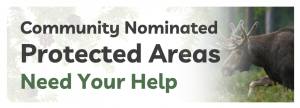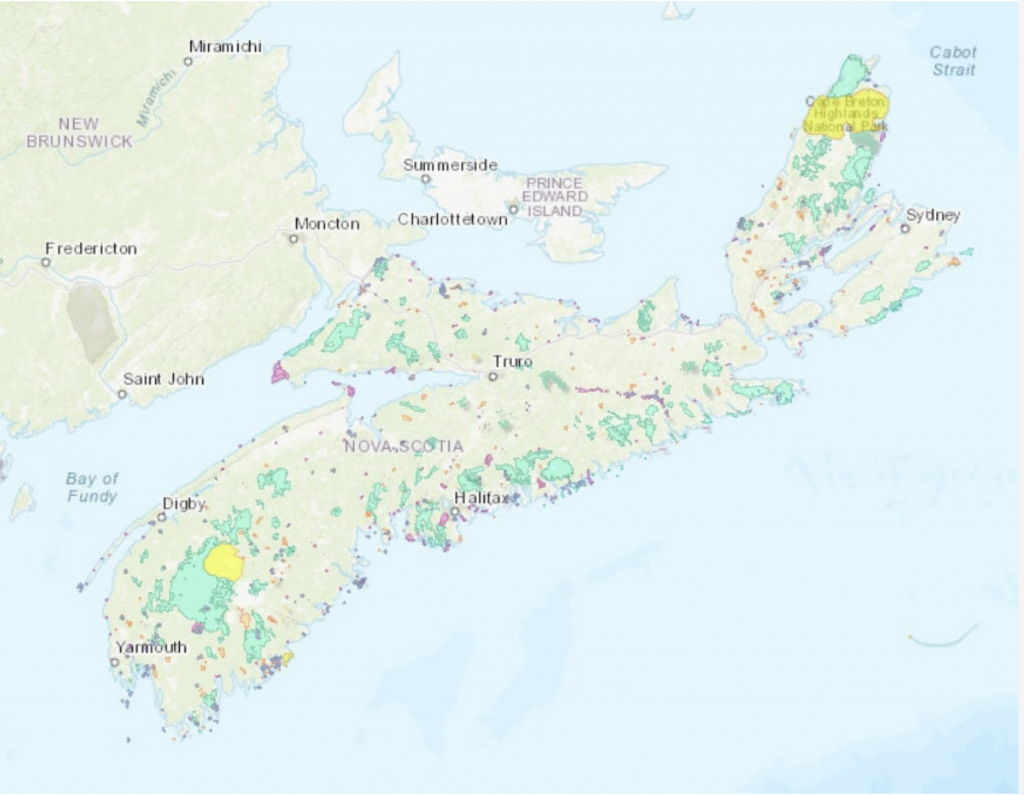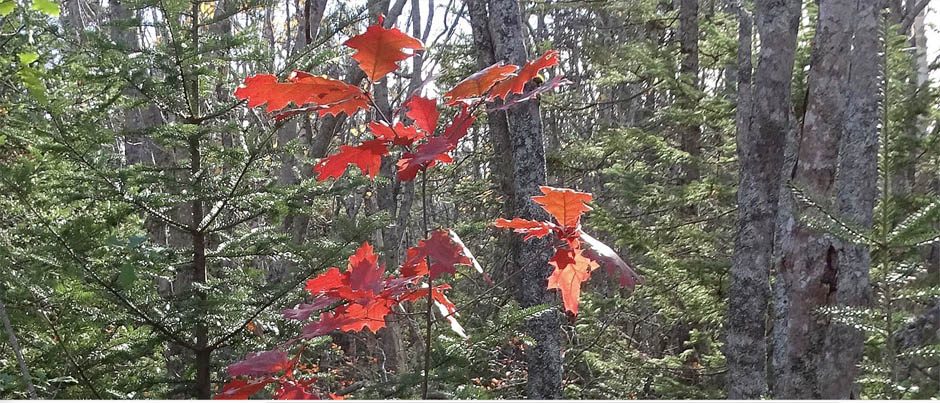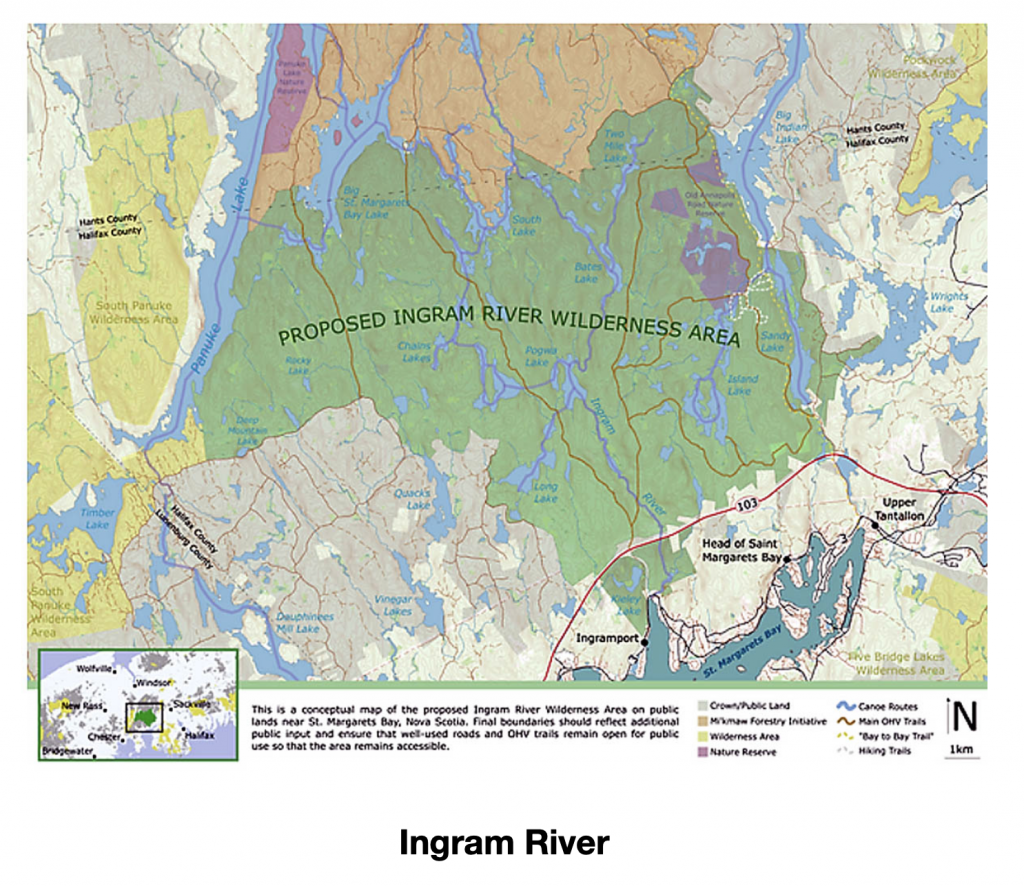Received from Nature NS, July 20, 2025:
 In an April 2019 Science article, scientists presented an updated Global Deal for Nature that included land, freshwater, and marine ecosystems and called for protecting, through varied means, at least 30% of these ecosystems by 2030, with an additional 20% protected as “climate stabilization areas.” In response to the following UN Convention on Biodiversity call for expanded global protected areas, Canada has committed to a two-stage expansion of our protected areas system, protecting 25% of land and ocean by 2025 and 30% by 2030. For Nova Scotia’s contribution to this national goal, the provincial government has committed to increasing protected areas to 20% by 2030.
In an April 2019 Science article, scientists presented an updated Global Deal for Nature that included land, freshwater, and marine ecosystems and called for protecting, through varied means, at least 30% of these ecosystems by 2030, with an additional 20% protected as “climate stabilization areas.” In response to the following UN Convention on Biodiversity call for expanded global protected areas, Canada has committed to a two-stage expansion of our protected areas system, protecting 25% of land and ocean by 2025 and 30% by 2030. For Nova Scotia’s contribution to this national goal, the provincial government has committed to increasing protected areas to 20% by 2030.
And yet, lagging delivery on the now out-dated Parks and Protected Areas Plan, limited public consultation on planning work for the next 5 years, and suspiciously timed forestry activity in proposed protected areas are putting Nova Scotia’s 20% by 2030 goal in serious jeopardy.
 In 2021, the province slightly exceeded its previous 13% land protection goal with the addition of several new parcels and, in 2024, released a short strategy document outlining a path to 15% protected areas by 2026. These gains were hard-won though. As early as 2021, following the success of misinformation campaigns targeting the Biodiversity Act, forestry lobby groups set to work spreading misinformation about the Parks and Protected Areas Plan and the process for protecting Nova Scotia’s wild spaces. Some lobbyists went as far as to say that Nova Scotians would lose access to forested land under protection.
In 2021, the province slightly exceeded its previous 13% land protection goal with the addition of several new parcels and, in 2024, released a short strategy document outlining a path to 15% protected areas by 2026. These gains were hard-won though. As early as 2021, following the success of misinformation campaigns targeting the Biodiversity Act, forestry lobby groups set to work spreading misinformation about the Parks and Protected Areas Plan and the process for protecting Nova Scotia’s wild spaces. Some lobbyists went as far as to say that Nova Scotians would lose access to forested land under protection.
Now, several community-nominated areas waiting for formal protection are facing logging pressure as the biggest players in the forest industry attempt to clear forests before they are protected.
Help Us Protected These Wild Spaces Before It’s Too Late
Nova Scotia is legally required to protect approximately 330,000 hectares of its lands and waters within the next five years. The protected areas system falls under the jurisdiction of the Department of Environment and Climate Change while forestry falls under the Department of Natural Resources and Renewables. Ideally, the departments would work together to ensure that wilderness being assessed for protection would avoid harvest activity, or at least high production forestry, before a decision about the area’s protected status was made. The government’s own Collaborative Protected Areas Strategy calls for the departments to work together and with citizens to meet these targets. Yet, at present, there is no formal process for protecting citizen-nominated wildernesses. Government identifies, assesses, and protects lands with little (or sometimes no) input from local communities. While in limbo, these lands are at risk of harvest and development. Other lands may support old forests, rare species, or unique biodiversity but, for whatever reason and even when advocated for by citizens, aren’t on the province’s radar for protection. Take a look at these community-nominated protected areas and how you can help locals actually protect them:
When the Bowater Mersey Paper Company collapsed in 2012, the St. Margarets Bay Stewardship Association and local citizens successfully rallied to get the province to buy back vast expanses of forest from St. Margaret’s Bay to Panuke and Big Indian Lakes. This area contains the oldest documented forest in the Maritimes, with one tree aged at 535 years old, supports 17 confirmed Species at Risk and 72 species of conservation concern, and has been identified as core habitat for Mainland Moose.
Despite broad public support, the province rejected a community forest proposal developed by SMBSA and conscientious foresters with a focus on light-touch forestry. Instead, control was ceded to a consortium of logging companies and parcels were traded away to make room for a quarry and asphalt plant. In 2017, SMBSA published its first 20,000ha Ingram River Wilderness Area map and brochure, later incorporating the Mi’kmaw Forestry Initiative project, supported by SMBSA, at the northern end of the watershed, and appealed to government to establish a formal wilderness area. In 2019, the province assured SMBSA that the area would undergo a formal assessment and, in 2021, that areas not protected under the recent Island Lake Wilderness Area designation would either be protected in the future or fall under the ecological forestry leg of Dr. Lahey’s new forestry triad. Today, just over 25 per cent of the proposed wilderness area is protected and roughly 75 per cent is under threat.
This summer, Houston’s government announced the proposed Ingram River Wilderness Area has been targeted for high production (clearcut) forestry. Just over 60.03ha, or over 110 football fields, of clearcutting has been proposed for the St. Margaret’s Bay watershed. 30.76 ha, or 76 acres, of those harvests have been proposed within the boundaries of the proposed Ingram River Wilderness Area.
How You Can Help
You can view the proposed harvests by navigating to the Harvest Plans Map Viewer and commenting on these polygons:
1. HX025202 – 24.13 hectares by
2. HX025201 – 6.63 hectares
Comments are due by July 22nd.
Express your support for the designation of IRWA and concerns about this logging to:
– Minister of Natural Resources, Tory Rushton at toryrushtonmla@bellaliant.com and mindnr@novascotia.ca, or 902-597-4039
and to
– Premier Tim Houston, at pictoueastamanda@gmail.com and premier@novascotia.ca, or 902-424-6600
Remind them that:
1) the protection of the Ingram River area is supported by over 50 businesses and nonprofits, including the Confederacy of Mainland Mi’kmaq and the Tourism Industry Association of Nova Scotia, with a combined membership of 50,000 Nova Scotians
2) protection will still leave the majority (over 60%) of the area open to forestry, mining, and other extractive values, while enabling the reasonable support for ecological and community values that protection brings, including hiking, camping, hunting, fishing, and ATVing on designated routes,
3) the Department of Natural Resources claims they do not cut even close to the total amount of wood our forests grow every year. This would mean there is a high level of flexibility in what areas can be protected without harming the forestry industry in any way.
4) the protection of the proposed Ingram River Wilderness Area would fill a massive gap in Nova Scotia’s protected areas system, moving us closer to the 20% by 2025 goal our province is legally required to complete.

 Goldsmith Lake is the largest lake in the Round Hill River watershed, a sub watershed of the Annapolis River. Unusual for the area and due in part to its history as former Bowater lands, Goldsmith Lake has not been dammed for hydroelectricity or water supply or developed for summer or permanent homes.
Goldsmith Lake is the largest lake in the Round Hill River watershed, a sub watershed of the Annapolis River. Unusual for the area and due in part to its history as former Bowater lands, Goldsmith Lake has not been dammed for hydroelectricity or water supply or developed for summer or permanent homes.
In 2022, following years of local reports of rare species and large old trees, the Citizen Scientists of Southwest Nova Scotia submitted a proposal to the Protected Areas Branch of the Department of Environment and Climate Change to protect 3,900ha of public land encompassing Goldsmith Lake, Corbett Lake, the headwaters of Round Hill River, and Tupper Brook. In 2024, the Citizen Scientists submitted An Updated Proposal to Protect the Goldsmith Lake Area, having identified additional Species At Risk occurrences and discovered previously unidentified areas of forests that meet the province’s criteria of “Old Growth.” By this spring, the total number of Species At Risk occurrences had exceeded 100, including sightings of Frosted Glass Whiskers, Blue Felt and Black Foam lichen, Black Ash, five species of birds and the American Marten.
So far, the province has yet to make any meaningful move to protect the Goldsmith Lake area. Responding to a Tweet Nature Nova Scotia shared in 2024 calling for swift action to prevent forest harvest in several areas including Goldsmith Lake, the province replied simply: “this is not a designated wilderness area.”
Chain Lakes Wilderness Area
The southwest corner of Kings County is the only major section of public land in the County that remains largely forested without human habitation. The area supports several Species At risk including the Canada Warbler, Olive-sided Flycatchers, Wisqoq (Black Ash), old forests, intact waterways and wetlands, and rare lichens. Recognizing the value of this biodiverse area and that Kings County contains only about 4.5% protected areas at presents, the Blomidon Naturalists Society is proposing a new wilderness area that would protect this area of southwest Kings County from some of the more harmful effects of human settlement.
They are calling on the Department of the Environment and Climate Change to start the planning process to designate the Chain Lakes Wilderness Area, using a proposal submitted in 2023 as the foundation. As is the case for Goldsmith Lake, the province has been slow to act. The Blomidon Naturalists Society is calling on individuals, groups, and businesses to show their support and are approaching local municipalities and politicians for letters of support. In the meantime, they’ve asked the province to pause new resource extraction activities in the area, to protect it during the planning process. If the clear cutting in the area continues, there will be little left to protect.
How You Can Help
The Citizen Scientists and Save Our Old Forests are calling for a pause on all logging, road building, and industrial activities in the Goldsmith Lake area until the Department of Environment and Climate Change has had a chance to assess it for permanent protection. The Blomidon Naturalists Society is asking for the same in the Chain Lakes area. Nature Nova Scotia and many other groups also sent an open letter to the Premier asking him to direct Minister of Natural Resources Tory Rushton to halt all logging in areas proposed (by government or citizens) for protection, stop logging high conservation value forests, and to halt all clearcutting until the 20% protected areas goal has been reached. Share these calls for meaningful conservation action by contacting both Minister of Natural Resources Tory Rushton and Minister of Environment and Climate Change Tim Halman as well as Premier Houston to remind them of their duty to safeguard our shared natural capital:
Minister Tory Rushton
toryrushtonmla@bellaliant.com and mindnr@novascotia.ca
902-597-4039
Minister Tim Halman
timhalmanmla@gmail.com and Minister.Environment@novascotia.ca
or 902-469-7353
Premier Tim Houston
pictoueastamanda@gmail.com and premier@novascotia.ca.
or 902-424-6600
Contact your MLA and share your concerns with them.
Sign a petition or help Save Our Old Forests get more petitions out there.
Familiarize yourself with Nova Scotia’s Harvest Plan Viewer, so you can respond to unsustainable unethical logging when it happens.
Help Blomidon Naturalists Society educate the public in Kings County and launch new petitions.
Together, We Can Save These Wild Places




